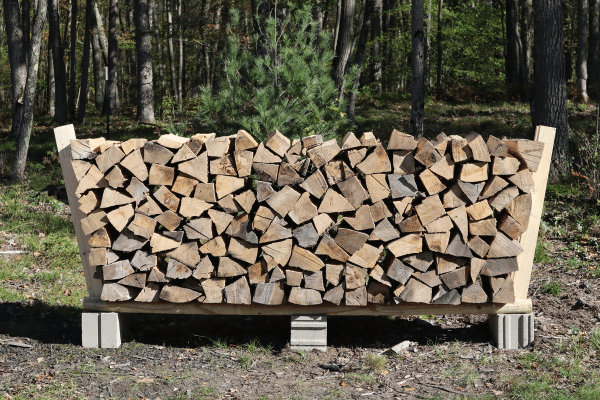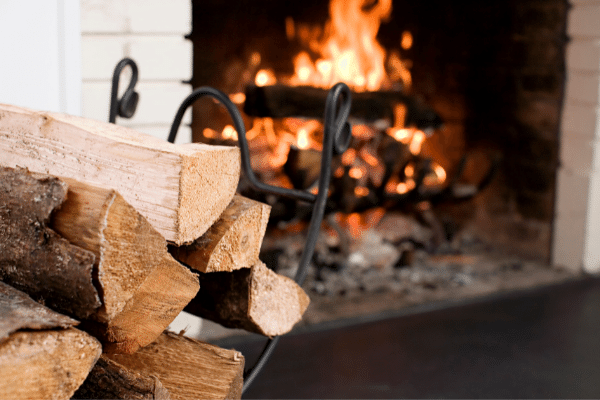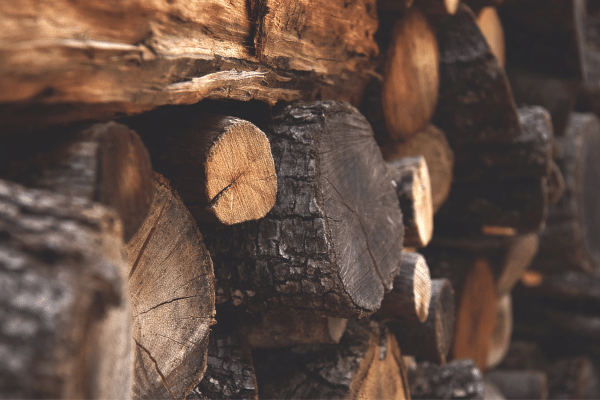- Home
- Best Firewood
What Is The Best Firewood To Burn?
This post may contain affiliate links so I earn a commission.
What is the best firewood to burn in your wood stove, fireplace or outdoor fire pit?
Although all firewood may look similar in appearance, the species you burn and the amount of moisture contained inside the firewood can make a huge difference.
Wet firewood that has not been given time to properly season won't burn very well.
In fact, wet firewood is the biggest contributor to creosote buildup inside your chimney because the fire burns at a low temperature and never gets very hot.
When wet firewood sizzles and smokes, the unburned gasses adhere to the inside of your chimney walls, forming creosote.
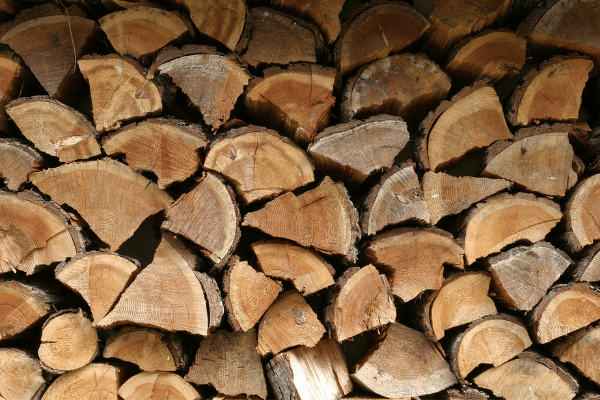
Over time layers of creosote build up and create a very flammable coating on the interior lining of the chimney.
Without proper cleaning, the creosote can catch on fire resulting in a devastating chimney fire.
So, which type of firewood is the best choice for your needs?
Let's look a little closer at some of your options to help you make the best choice possible.
Burning Hardwood Firewood
If you're lucky enough to have access to hardwood trees, you'll find that most species of hardwoods create excellent firewood.
Hardwoods are typically more dense than a softwood because they grow a lot slower resulting in heavy, dense logs that are great for longer burn times.
Trees like oak, maple, ash and even most fruit trees have great BTU ratings and have good coaling qualities which makes them some of the best firewood for a fireplace.
BTU is short for British Thermal Unit which is a unit of measurement for energy.
One BTU is equal to the amount of energy used to raise the temperature of one pound of water by one degree Fahrenheit.
Yes, elm is a great firewood choice because like other hardwoods, it's really dense.
However, elm can be difficult to split because the grain is very twisted.
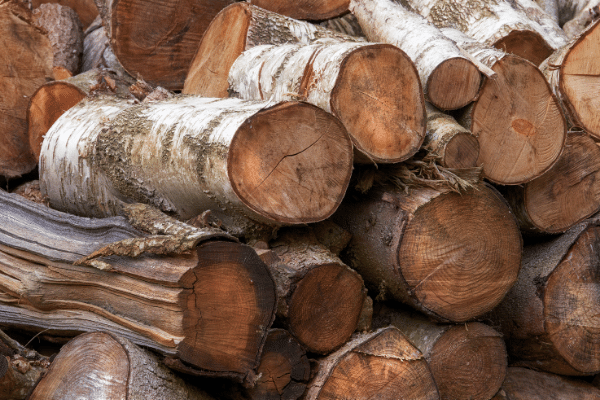
Typically when you try to split a piece of elm firewood, it tears or shreds apart as opposed to easily splitting like a piece of ash firewood would do.
Depending on the species of birch tree, birch firewood can range from moderate to excellent.
For example, black birch is a great firewood choice and it's the best firewood in the birch family.
White birch, also known as paper birch, is the lowest quality of firewood in the birch family and its waterproof bark has a tendency to hold moisture inside the wood, so you'll want to make sure you split white birch up into several smaller chunks.
What's The Best Firewood - Burning Softwood
Although softwoods typically don't produce BTUs as high as hardwoods, it doesn't mean they won't effectively heat your home or create a beautiful fire.
If you live in the Pacific Northwest you might not have access to hardwoods, and trees like lodgepole pine or Douglas fir dominate the landscape.
Luckily, Douglas fir is excellent firewood
It burns hot, creates good coals and it splits really easily.
In fact with a rating of 26.5 million BTUs per cord, Douglas fir outranks a lot of popular hardwood trees when comparing BTU values.
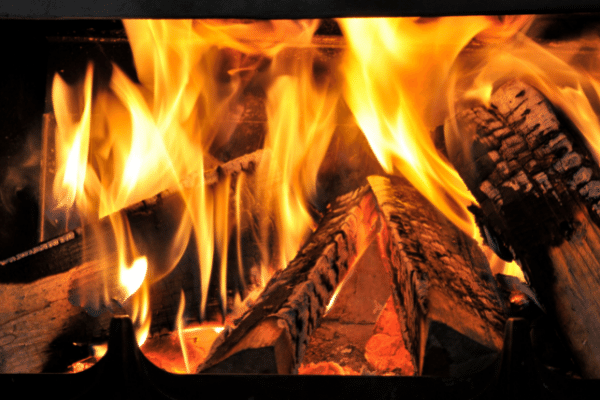
One downfall with softwoods is the sap, or resin they leave behind when handling and burning the wood.
Softwoods burn hot and start easily which makes them perfect for kindling along with mixing them in with hardwoods to liven up a fire that's starting to burn down.
Cedar, which is a softwood, is quite possibly the best wood when used as kindling for lighting a fire.
Cedar burns great and due to the resins inside the wood, it's extremely easy to light which creates a hot fire quickly, reducing the possibility of a smoldering, slow starting fire that creates creosote.
Common Firewood Measurements
Whether you cut your own firewood or you're interested in the best place to buy firewood, understanding common firewood measurements is important.
With terms like cord, face cord or a rick of firewood, it's easy to get confused how much firewood you're buying or using throughout the winter.
To keep things simple, there's only one official firewood measurement which is a cord.
A cord of firewood has a total volume of 128 cubic feet and is usually stacked 4 feet high x 4 feet wide x 8 feet long.
Generally, the firewood is cut into 16 inch lengths and stacked into 3 rows, creating the cord.
A half cord of firewood would simply be 64 cubic feet of firewood, or about 1.5 rows of a full cord.
Firewood Cord Calculator
To make things easy, check out our free firewood calculator that will add up the dimensions of your stack of firewood and tell you exactly how much firewood you have!
That's right, no more guessing, just enter in the numbers and you're done!
Storing Firewood - What Is The Best Firewood
After spending hours or days cutting your own firewood, you'll want to make sure you properly store it so it can dry out and be ready to burn when you need it.
What's the best way to store firewood?
There's a lot of great options but my personal favorite is an outdoor firewood shed with a roof and slatted sides.
The roof easily protects the wood from rain and snow, and the slatted sides allows the warm summer winds to flow through the firewood and dry it out.
Of corse, if you don't burn a lot of firewood you might not need a full sized shed to hold the firewood for a campsite or fire pit.
So, building your own firewood rack or purchasing an outdoor firewood rack with a cover is a great option.
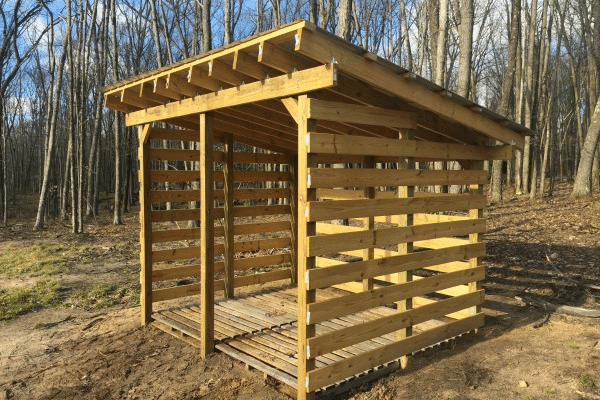
Have you ever considered building your own DIY pallet firewood rack?
It's a really easy way to store firewood and they're simple to make.
No matter what option you choose, you'll want to elevate the wood off the ground to prevent soaking up ground moisture and you'll also need to cover the top 1/3 portion of the firewood stack.
When considering how to store firewood outside, this is the best way if you don't have a dedicated structure like a firewood shed.
However, don't completely cover the stack with a tarp or plastic because firewood needs to breathe.
Completely covering it will lead to mold growth throughout the wood.
Stacking Firewood
When considering how to dry firewood fast, making sure the wood is properly stacked is important.
Simply throwing firewood into a pile won't work and you're just begging for mice and animals to make a nest inside the pile.
The best way to stack firewood is by elevating it off the ground a few inches (like we previously mentioned) and covering the top 1/3 portion of the pile with a tarp or simply laying some old plywood or metal roofing on the top to shed away rain and snow.
T-posts can be driven into the ground on each end for supports allowing you to make the firewood stack as long, or as short as you want.
Should you stack the wood with the bark up or the bark down?
That's an old debate that many people still have mixed opinions about.
When you're debating how to season firewood the best way, stacking wood with the bark up or bark down won't make a huge difference.
If I had to choose, I generally like to stack my firewood with the bark facing up.
I think it helps defect some of the rain water and it also prevents water from pooling under the bark.
What Is The Best Firewood For Splitting
If you've ever tried to split a piece of knotty wood that refuses to break apart, you're probably wondering what is the best firewood for splitting?
Although it can vary from tree to tree, species like ash, cedar, Douglas fir and cherry are known for being easy to split.
You have several options to consider when splitting firewood ranging from a splitting axes, hydraulic wood splitters and even a firewood drill bit that turns your drill into a firewood splitting machine.
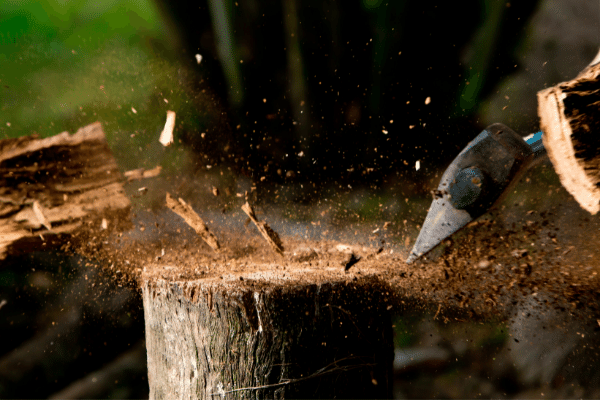
If you have a lot of wood to split, a hydraulic splitter is definitely the way to go.
You can split a lot of wood in a short amount of time without feeling completely exhausted.
If you don't need to split a lot of wood, or can't justify spending $1000 on a hydraulic splitter, a splitting axe is the next best option.
Similar to a maul, a splitting axe is much lighter and won't tire you out as fast as a heavy splitting maul will.
What Is The Best Firewood - Overall
So, what is the best firewood choice?
Dry firewood that's readily available to you, and is properly cut, split and stacked.
Every firewood type will have its own advantages and disadvantages.
Take time to research some of the popular types of firewood available to you in your area, then you'll be able to choose the best firewood for your specific needs.
